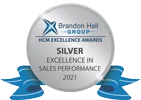How to Deliver More Effective Online Sales Presentations

We all know that the 21st century has seen an ever-increasing emphasis on a remote sales process. As a natural consequence of that shift, a greater share of presentations are given online, rather than in person. On the one hand, this shift to remote selling means we’ll have easier access to more customers than ever before, while saving on travel-related expenses. On the other hand, sales reps need to recognize that digitally delivered sales presentations call for different skills to learn and factors to be considered. Hence, this primer on making sure your distance presentation is as impactful as possible.
- Prepare with excellent research and testing.
Because every client is a unique case study unto themselves, sales reps can’t just rely on a boilerplate presentation. Rather, they need to tailor and customize to the prospect’s precise needs. That entails asking the right questions in the discovery phase and really understanding the client’s issues, motivations, and communication style.
Once that’s determined, a sales rep can then focus on highlighting the specific features and benefits that apply to the situation, tying them to the client’s identified needs. Those features that don’t apply? Discard them. Remember, there’s only so much time in a presentation, and wasting it by talking about things that don’t matter to the prospect will leave you less time to talk about what does matter. It also risks alienating the lead, who could be annoyed by the irrelevance.
As another part of presentation preparation, test and stay up to date with technology tools that are available to you, such as the meeting software itself. While technical glitches can happen any time, they make a bad first impression and can be a big time-waster at the onset of the virtual meeting, so verifying that it works ahead of time (sometimes more than once), will be critical to keep things running smoothly.
- Make the video presentation a bi-directional one when possible.
We’ve all had that presentation where the client is on audio only, and we can sometimes hear or sense the prospect doing something else simultaneously or tuning out. While this can be a signal that the presentation isn’t compelling enough, the client may also be using this time to multitask.
The best way to curtail this practice, no matter the cause, is to have the prospect join in on the video. Not only does this eliminate the problem outlined above, but it allows sales reps to read the client’s facial expression for clues on how the presentation is going or spot areas where there’s apparent confusion and a need to stop and clarify further.
- Match the prospect’s energy level – to a point.
An early morning meeting or a serious-minded potential client will be more likely to have a serious, lower energy communication than a chatty extroverted prospect. It’s important to discern the client’s energy and match it to a degree. That solemn lead who slowly sips his morning coffee? Be calm in your own tone, though it’s a good idea to be slightly more upbeat – emphasis on slightly. You want to be a positive boost, but too bright a sunshine could send them scurrying.
Conversely, feel free to be energetic if the presentee is high energy, but consider being slightly less than the prospect. After all, as the Trusted Advisor, you want to exude an aura of authority, and *too* much unbridled enthusiasm runs the risk of losing control of the conversation, romping off on some tangent with the focus now lost in a forest of chatter, the original purpose of the demo left far behind.
- Visual aids can make a good presentation great, if used correctly.
Using visual aids often make a great addition to a presentation – whether it’s something product-related (such as a graph, chart, or image that illustrates an important point) or a humorous image to break up the monotony. They also help appeal to visual learners.
A few caveats apply: 1) Make sure it’s relevant to the presentation in some way, 2) The humor should be clean, noncontroversial, and understood by the audience (this last point applies to international presentations – many jokes are culture-specific and can be lost in translation – no pun intended), and 3) text should be used sparingly – you want the visual to be able to stand on its own as much as possible.
- Ask questions and leave space for prospects to ask questions.
It’s important to ask questions as you go along. This serves as a check to see how the presentation is going and gain confirmation that the prospect both understands what they’re seeing and recognizes the applicability of the solution to their needs. It can also uncover objections that need to be addressed and keeps clients engaged in the presentation.
If the prospect isn’t forthcoming with questions, be sure to encourage them to ask about what they’re watching – something simple like, “What questions do you have about what I’ve just showed you?” can work to draw them out. At the very least, when plotting out the presentation’s timeline beforehand, have a space towards the end of the allotted time for questions.
Arguably the most important tip: If the client has a question earlier in the presentation, let them ask it then. Not only does this foster a free-flowing conversation, asking them to defer the question until the end could be a distraction because the prospect might be preoccupied with remembering their unanswered query, and hence less attentive to the rest of the presentation.
- Keep on track with the timeline.
You could have the most brilliant, engaging presentation ever, but stay on task and respect the prospect’s time by staying within the allotted space carved out for the presentation. Running over time can have a negative impact on the rest of their day because it delays everything else. Furthermore, if you keep within the timeframe and the client still wants more, you have a readymade opportunity to schedule another meeting to cover the other items they want to discuss. Which leads us to our final point…
- Don’t end the presentation until you’ve defined and gotten permission for the next steps.
Maybe you’ve managed to get permission to ask for the sale and successfully closed. If so, great! If not (which is far more likely), no problem. In either case, whether the sale happens then or not, there will be next steps to carry out in the sales process. Articulate what those are, the timeline for the next steps, and obtain the prospect’s agreements to those next steps and timeline. Failure to do so will leave things up in the air, a state of stasis you want to avoid in sales whenever possible.
Great opportunity lies within the realm of online presentations. But in order to capitalize on those advantages, you’ll need to make it specific to each client and be prepared for the requirements of remote sales. Using the steps and tips above will help you fashion the most productive presentation possible and help you convert to the next stage in the selling process.

- Account Planning (12)
- Awards (44)
- Client Testimonial (37)
- Personal Branding (21)
- Podcast (12)
- Research (78)
- Sales Career Development (90)
- Sales Coaching (166)
- Sales Consulting (141)
- Sales Culture (180)
- Sales Enablement (382)
- Sales Leadership (116)
- Sales Management (267)
- Sales Negotiation (14)
- Sales Prospecting (138)
- Sales Role-Playing (19)
- Sales Training (243)
- Selling Strategies (281)
- Soft Skills (78)
- Talent Management (101)
- Trusted Advisor (29)
- Virtual Selling (57)
- Webinar (13)

























